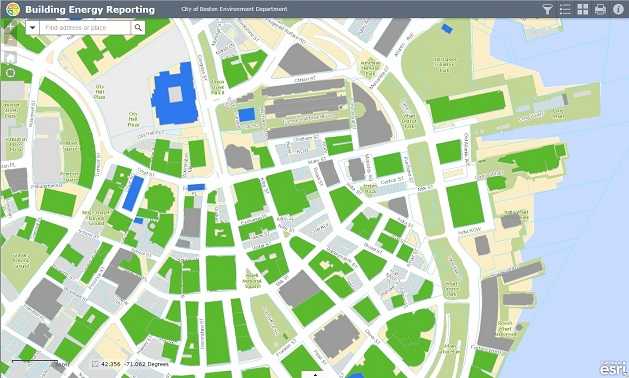Today we hear a lot about the importance of “data-driven decision making.” Whether in conference sessions, articles, or marketing materials; making decisions with data is all the rage—and it should be! In the energy efficiency world, we refer to this broadly as the use of available information to make educated choices that result in the most optimal outcomes, both financially and in terms of energy savings. For buildings, which account for 40 percent of all U.S. energy use, a major culprit for wasted energy is a lack of public information upon which people can act.

Click above to download “Putting Data to Work: Using Building Energy Performance Data to Expand the Market for Energy Efficiency in Buildings”
In many cases, data that shows how much energy and water a building uses is unavailable to the market, meaning that the energy and water consumption—which can account for a third of the cost of operating a building—can’t be factored into business decisions. This blind spot affects everyone negatively, whether you’re a business owner looking to move into a better quality building, a building or office manager paying too much for your utility bills, or a tenant occupying an uncomfortable space with bad ventilation.
Absent a national policy, leading cities, counties, and states are enacting local energy benchmarking laws to require large commercial and multifamily properties in their jurisdictions to measure and report their annual energy (and often water) consumption, along with other building characteristics. These local ordinances typically contain a transparency component, meaning portions of the reported data are made public. When partnered with other local initiatives, this information improves cities’ long-term resource and climate planning, and can inform tracking of progress toward emissions reduction targets.
A great example of this is Clean Energy DC, the District of Columbia’s recently released climate and energy plan, which provides a vision for creating a cross-sector sustainable energy future in the city and incorporates District-collected benchmarking data into its energy modeling.
Whole-building energy consumption data, as collected through local benchmarking programs, is foundational information for markets servicing the built environment, including both the real estate and energy efficiency markets. This data provides better information for real estate transaction decisions such as purchasing and leasing space, allows buildings to compare their energy use with peers, creates a historical record of building performance over time, and and in cases where laws include audit and retrocomissioning, helps to identify opportunities for efficiency improvements.
Cities are sharing this data in creative ways to allow decision makers to better understand and interact with the new datasets. Boston, Chicago, New York, and Philadelphia provide map-based visualization platforms that allow the public to view covered buildings’ performance and geography, interacting with the published dataset in a more robust way than with spreadsheets alone. Even further, Philadelphia, Seattle, and Chicago provide energy scorecards directly to building owners, which provide specific information about their buildings compared with peers and, in some cases, identify opportunities for improvement and expected savings.

Explore Boston’s building energy and water use data by clicking on the above map.
As the role cities play in improving the performance of building stock evolves, they are tackling the question of what can be done with this valuable information beyond consolidating and publishing the dataset. To that end, the Institute for Market Transformation (IMT) is working on a multi-year project called “Putting Data to Work” with partners in New York City and Washington, DC to help stakeholders use whole-building energy data to make financially beneficial decisions that reduce their energy consumption. We’re working to capture lessons learned through our partners’ activities, and will develop a toolkit of resources for other cities (and energy efficiency program implementers at utilities and third party providers) to use in the design and deployment of their own programs aimed at using the data. This will help cities to learn from one another, standardize their activities and offerings, and continue to move the needle on building energy efficiency from the local level.
Some of the key project areas of interest include:
- The Retrofit Accelerator: Run out of the New York City Mayor’s Office of Sustainability, the Retrofit Accelerator acts as a third-party advisor for building owners looking to make energy efficiency improvements to their assets. Accelerator staff provide advisory services, connect building owners with contractors, incentives, and financing, and provide training for building staff in efficient building operations. Building owners can reach out to the Accelerator for assistance, and staff also use benchmarking and audit data reported to the city under Local Laws 84 and 87 to identify high-potential energy savings opportunities for outreach and engagement.
- The efficienSEETM Calculator: Developed by NYCEEC, the efficienSEETM Calculator uses benchmarking data reported under Local Law 84, combined with other datasets, to predict energy and cost savings from common energy conservation measures.
- The District of Columbia Sustainable Energy Utility (DCSEU): The DCSEU is undertaking strategic outreach to buildings with high energy-savings potential, using data reported under the District’s benchmarking law and connecting building owners to incentives for projects that can improve the efficiency of their space.
For more on this initiative, you can check out IMT and partners’ summary paper presented at the 2016 ACEEE Summer Study on Energy Efficiency in Buildings.
